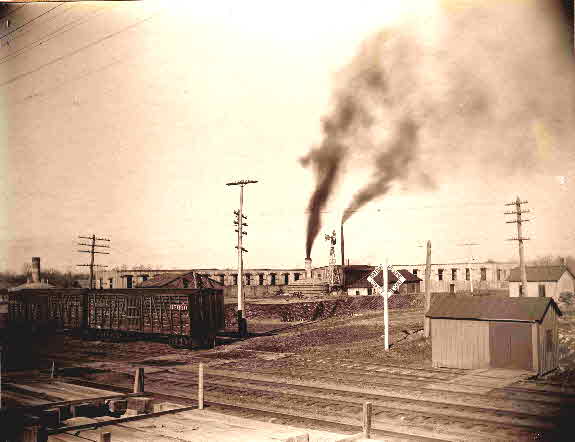|
Stryker tile factory helped drain the Great Black Swamp
 |
Draining and tiling allowed local pioneers to convert heavily forested, swampy land into productive farms. The area is blessed with abundant clay, providing raw material for numerous brick and tile factories established in the 1800s.
At these facilities clay was formed into brick or tile, dried, and then baked or “fired” in kilns like the one in the center of this photograph to create finished products.
By the 1870s, Walter I. Pepple established a tile factory between Stryker and West Unity on the west side of Ohio 191 south of County Road H.50. When this facility was destroyed by fire in September 1882, Pepple and J. C. Smitley constructed a tile factory on the west side of Stryker’s Horton Street, north of the railroad.
Smitley sold Pepple his interest in the business in February 1884. By 1886, Pepple manufactured brick at the plant in addition to tile.
In December 1887, Pepple sold a half-interest in the business to John D. Rumsey, who operated the facility for more than 40 years with various partners before selling it to the Stryker Drain Tile Company in 1928.
Tile production at the facility ended by the early 1960s but it served as a distribution center before the property was sold in 1969 to Transport Terminal, Inc.
This circa 1902 vintage image of Rumsey’s tile factory was shared by David Ruffer of Stryker.
|

